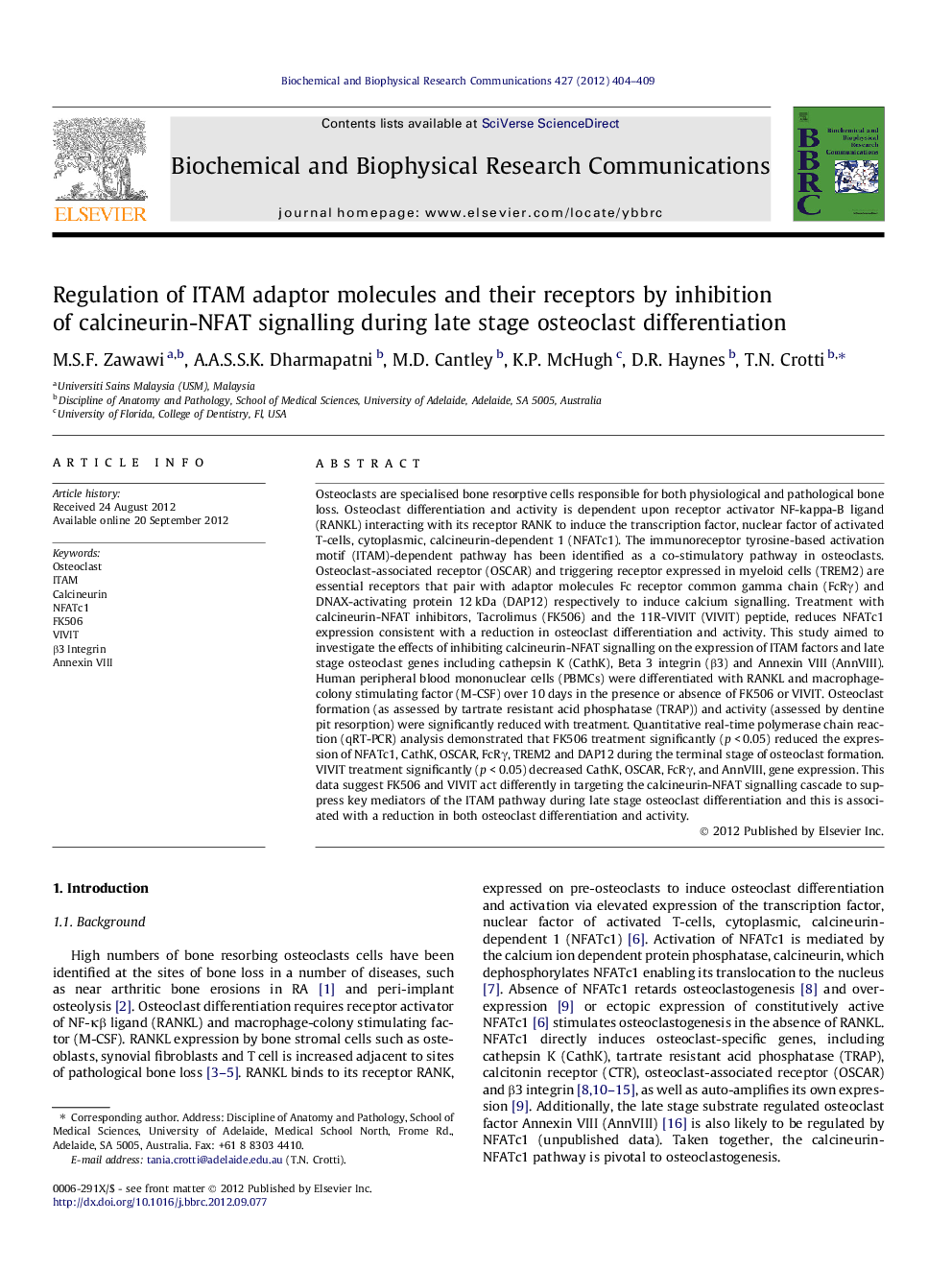| کد مقاله | کد نشریه | سال انتشار | مقاله انگلیسی | نسخه تمام متن |
|---|---|---|---|---|
| 1929247 | 1050449 | 2012 | 6 صفحه PDF | دانلود رایگان |

Osteoclasts are specialised bone resorptive cells responsible for both physiological and pathological bone loss. Osteoclast differentiation and activity is dependent upon receptor activator NF-kappa-B ligand (RANKL) interacting with its receptor RANK to induce the transcription factor, nuclear factor of activated T-cells, cytoplasmic, calcineurin-dependent 1 (NFATc1). The immunoreceptor tyrosine-based activation motif (ITAM)-dependent pathway has been identified as a co-stimulatory pathway in osteoclasts. Osteoclast-associated receptor (OSCAR) and triggering receptor expressed in myeloid cells (TREM2) are essential receptors that pair with adaptor molecules Fc receptor common gamma chain (FcRγ) and DNAX-activating protein 12 kDa (DAP12) respectively to induce calcium signalling. Treatment with calcineurin-NFAT inhibitors, Tacrolimus (FK506) and the 11R-VIVIT (VIVIT) peptide, reduces NFATc1 expression consistent with a reduction in osteoclast differentiation and activity. This study aimed to investigate the effects of inhibiting calcineurin-NFAT signalling on the expression of ITAM factors and late stage osteoclast genes including cathepsin K (CathK), Beta 3 integrin (β3) and Annexin VIII (AnnVIII). Human peripheral blood mononuclear cells (PBMCs) were differentiated with RANKL and macrophage-colony stimulating factor (M-CSF) over 10 days in the presence or absence of FK506 or VIVIT. Osteoclast formation (as assessed by tartrate resistant acid phosphatase (TRAP)) and activity (assessed by dentine pit resorption) were significantly reduced with treatment. Quantitative real-time polymerase chain reaction (qRT-PCR) analysis demonstrated that FK506 treatment significantly (p < 0.05) reduced the expression of NFATc1, CathK, OSCAR, FcRγ, TREM2 and DAP12 during the terminal stage of osteoclast formation. VIVIT treatment significantly (p < 0.05) decreased CathK, OSCAR, FcRγ, and AnnVIII, gene expression. This data suggest FK506 and VIVIT act differently in targeting the calcineurin-NFAT signalling cascade to suppress key mediators of the ITAM pathway during late stage osteoclast differentiation and this is associated with a reduction in both osteoclast differentiation and activity.
► Calcineurin/NFAT inhibitors FK506 and VIVIT treated human PBMC derived osteoclasts in vitro.
► Differential regulation of ITAM receptors and adaptor molecules by calcineurin/NFAT inhibitors.
► FK506 and VIVIT suppress ITAM factors during late phase osteoclast differentiation.
Journal: Biochemical and Biophysical Research Communications - Volume 427, Issue 2, 19 October 2012, Pages 404–409